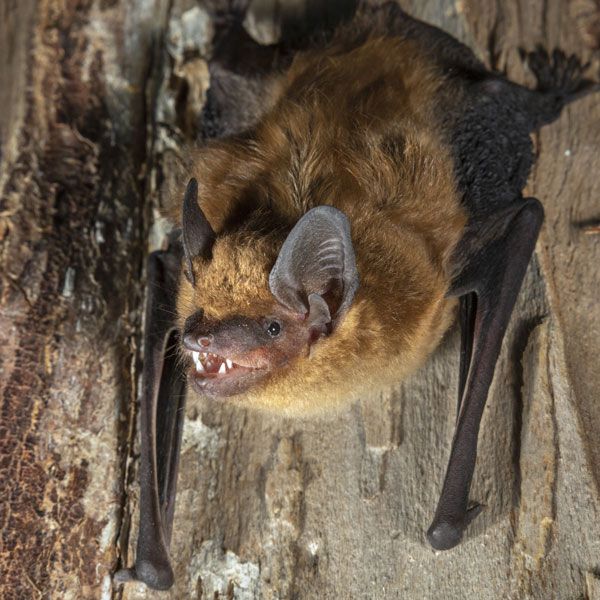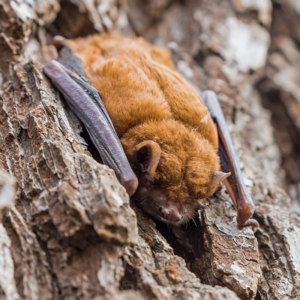
Big Brown Bats in Atlanta, GA
The big brown bat, a larger bat species, is notably widespread across Atlanta, GA, thriving in urban and suburban settings as well as wooded areas. They have shown resilience in environments that other bat species might struggle with. Their diet primarily consists of beetles, using their strong jaws to penetrate the beetles’ tough exoskeleton. Additionally, they consume moths, flies, wasps, and flying ants. Colonies usually range from 20 to 300 individuals, and these bats have the potential for a lengthy lifespan in the wild. However, many succumb to malnutrition during their initial winter hibernation, resulting in early mortality.
Big Brown Bat Habitat
Big brown bats display a diverse habitat range, inhabiting meadows, deserts, mountains, forests, suburbs, and cities. When it’s time for hibernation in November, they seek caves, mines, walls, attics, or other buildings, typically within around 50 miles of their summer roosts. During hibernation, they cluster in small groups and emerge in the springtime.
Big Brown Bat Behaviors, Threats, or Dangers
The big brown bat, primarily active at night, seeks various roosts during the daytime. While they consume diverse insects, they have a preference for beetles and are valuable in controlling agricultural pests. Their lifespan typically exceeds 6 years. However, their tendency to roost and hibernate within buildings poses a significant concern. During winter, they might seek warmth in attics or walls within homes and structures. These bats can carry diseases, warranting extreme caution if encountered. Should you find a bat in your building, avoid approaching or handling it and seek assistance from a professional pest control company.

